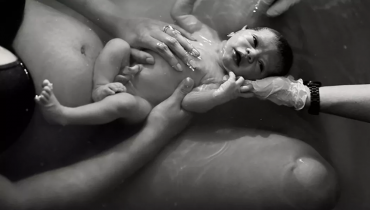For women, undergoing labor is a daunting task. Excruciating pain, blood loss, and high blood pressure makes it difficult for mothers to undergo normal delivery. This is why most women these days prefer undergoing the knife in order to skip through the labor pain. But as undergoing C section has its own disadvantages, Water birth has also become another alternative to easy delivery.
Water Birth: An Introduction
In simple words, water birth involves giving birth to baby under water either in a birth tub in a hospital, nursing center and even at home. Many women undergo labor and choose to give birth in water while others choose to undergo labor in water and comes out only when its time to push the baby. Otherwise, you can choose to get into the tub when its time to push.
Is Water Birth Safe for You and Child?
Though many midwives rave about the many benefits that water birth has for women and the baby, there are still some concerns which makes it less common.
The common issues associated with water birth include-:
• Chances of skin infection: While being submerged underwater, there are high chances of getting skin infections due to excess vaginal bleeding. Moreover, other bodily fluids which are released from the body might cause infections to the baby.
• High Maternity Fever: Fever greater than 100.4 Fahrenheit is considered to be too high for a mother to give water birth. Fever will make you uncomfortable in water and pushing will become difficult.
• Baby’s heartbeat: During labor, monitoring the baby’s heart beat becomes a necessity. However, when in water, it becomes difficult to monitor the heart beat rate and thus complications are usually not caught.
• In case of Multiples or Triplets: Giving water birth too multiples or triplets is usually not recommended. This is mainly because there are chances of premature birth of multiples and triplets. Monitoring the movement of the babies and what precautions to be taken becomes difficult to understand for the physician. Nevertheless, the same can be discussed with your physician to get birth plan and understand complications if any.

Who Can Give Water Birth
Women having gestation of at least 37 weeks to 41 weeks with head down single infant can choose giving water birth. A through check-up of health to understand any medical complications and risks I suggested.
Water Birth: Pros
Water Births are increasing gaining prominence due to its many positive effects on women as well as child. No evidence has been gathered over its possible major risks and many doctors have also recommended it to be safe. Since ages, warm water is being to cure cramps, muscle pain or body pain. Moreover, during menstruation we usually get to hot bottles to elevate pain. Similarly, warm water help ease the birthing process.
Elevates Pain by Providing Comfort and Mobility: Buoyancy of water offers a lot more comfort to the mother. Any comfortable position can be formed to give birth which will somehow reduce the pain. This is mainly because water makes your body feel weightless and reduces the pressure. Moreover, the warmth of the water helps contract and relax the muscle thus reducing pain.
Reduced Need of Pain Killer Medications and Drug: Studies suggest that water birth have revealed a reduced need of pain medications while undergoing labor and has also reduced the amount of pain felt. The reduced need for drug interventions is good for the health of mother.
Reduces Cesarean section deliveries: With the improved pain management during labor, water births are increasingly taking over C-section deliveries. It provides a normal way of delivering child and thus eliminates the hassles of undergoing surgeries.
The article talks about giving birth to child in water and what are the main risks associated with the same. Despite the risk, its prominence is because of several benefits that it offers according to midwives and doctors.
Image source: thebump.com/a/water-birth
Image source: midwivesofnj.com

























































Comments